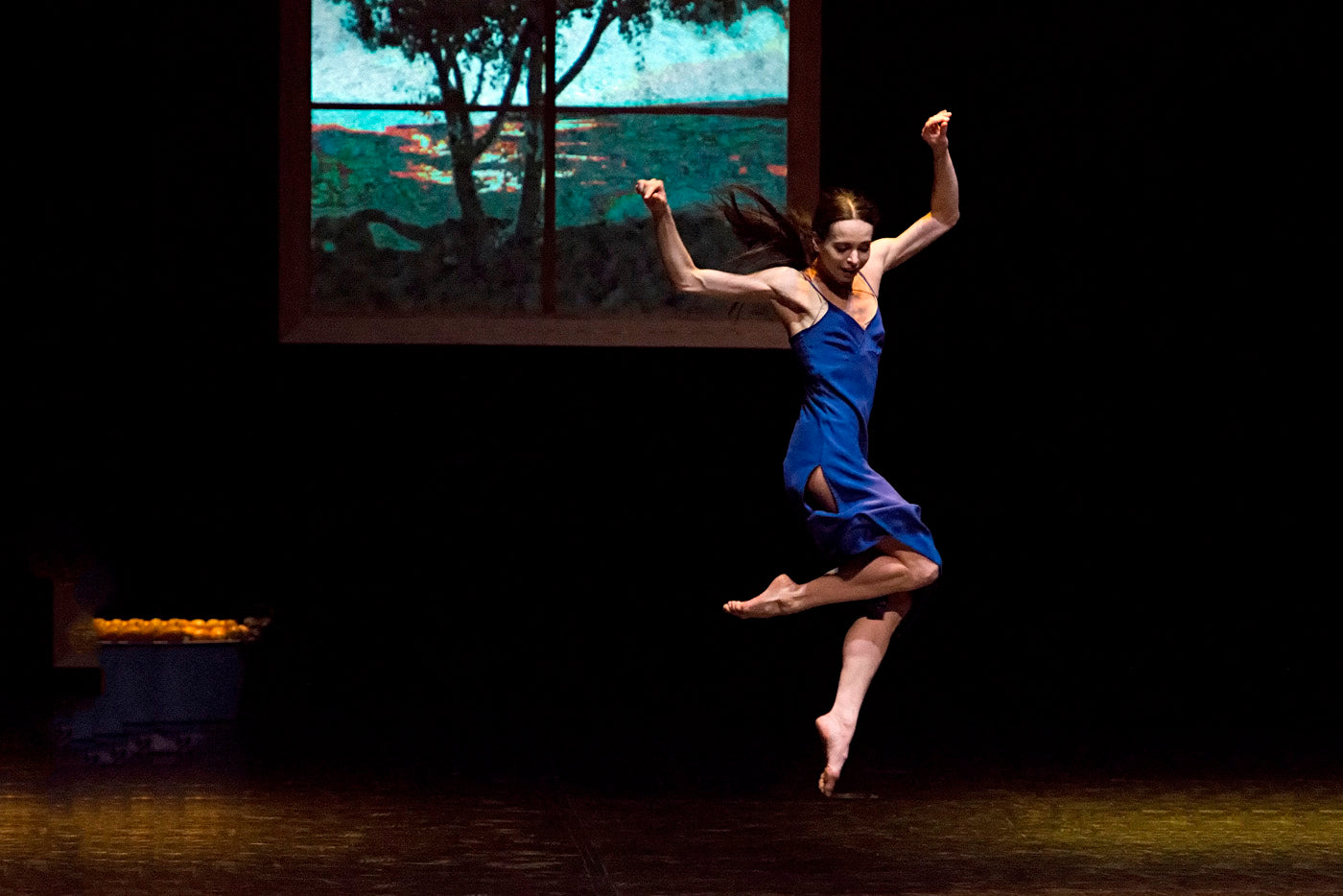It’s no surprise then, that Diana Vishneva, who performs regularly as a member of the Mariinsky Ballet and American Ballet Theatre, in addition to making guest appearances at the Bolshoi, is the current reigning Goddess of the pointe shoe, her bare feet also up to terpsichorean snuff, as was evidenced in her latest program, “On the Edge.” Excavating art, love, life, and yes, divadom, two custom-made works—Jean-Christophe Maillot’s “Switch” and Carolyn Carlson’s “Woman In a Room”—not only proved a platform for Vishneva’s technical prowess, but also showcased the dancer’s extraordinary acting skills.
Indeed, choreographers have been clamoring to make works on the 37 year old since she first began commissioning pieces for her 2008 program “Beauty in Motion” also seen at and co-produced by the Segerstrom Center, with impresario Sergei Danilian, whose "Kings of the Dance," built around four top-tier male ballet stars, originated there in 2006. At that time, Vishneva had called upon Alexei Ratmansky, who was artistic director of the Bolshoi and is now artist-in-residence with ABT, Dwight Rhoden, co-founder of Complexions Contemporary Ballet, and Momix’s Moses Pendleton, to create ballets for her.
With “On the Edge” (next stop Monaco, December 18-19 as part of Les Ballets de Monte-Carlo’s Dance Forum), Vishneva has ventured even further outside her comfort zone. Carlson, a Californian who’s lived and worked in Europe for the past 40 years and who usually doesn’t work with classical dancers, had said in a pre-concert talk that Vishneva, ever curious, participated in the work’s creation. (It also wasn’t the dancer’s first foray into bare feet, as last year the Russian tackled Martha Graham’s 1947 “Errand into the Maze” for a Graham troupe gala.)
And while the prima had also never worked with Maillot, artistic director of Les Ballets de Monte-Carlo, he was one of the judges when Vishneva performed in a ballet competition some twenty years ago. Still, Maillot’s “Switch,” also featuring Bernice Coppieters (Maillot’s wife) and Gaëtan Morlotti, both from Maillot’s troupe, made use of a different kind of technique that the Vaganova-trained Vishneva had been used to.
The apotheosis of triangles, with the trio coming together, breaking apart and reconfiguring itself like so many moves in a mesmerizing chess match, Maillot’s 30 minute dance drama unfolds on a gorgeous set designed by Alain Lagarde—Art Deco-style hanging lamps, chaise lounge, small Lucite chair and ballet barre. Oscar-nominated Danny Elfman provided the musical glue to Maillot’s choreographic vocabulary—dazzling, precise, and sensual—with the score featuring selections from his “Serenada Schizophrana,” and ranging from Hitchockian to Simpsonesque.
Coppieters, resembling the gamin-looking Zizi Jeanmaire, begins the work with a series of moves at the barre, Morlotti then rushing onstage before La Vishneva makes a spectacular entrance: Strutting, slinking, and clad in Karl Lagerfeld slits of silver lamé and sleeveless top, she extends an arm, dropping her handbag at Morlotti’s feet, in effect, commanding him to do her bidding. He—and Coppieters—ultimately won’t have it, and place Vishneva prone on the lounge, manipulating the star’s supple legs and willowy arms. While the ballet world’s Garbo luxuriates on leather—curling, stretching, kittenish—the pair kisses, this mischief-making a recurring theme. At this point the work smacks of Gatsby decadence and is also akin to a romp-filled silent movie, with tango-type moves executed between Vishneva and Coppieters one moment, Vishneva and Morlotti the next, the trio then uniting in a circle, conjoined hands, backs arched.
It’s only when Vishneva, having stripped from designer duds to strapless leotard and beelines for the barre that she means business. This is her true solace, the artist’s retreat: Dragging it center stage, making it, in effect, her partner, Vishneva dangles from it, wrapping a leg around it, hoisting herself up and around it. Taking charge, she finally crumples, removing her pointe shoes before tying them onto the barre. Barefoot, vulnerable, Vishneva faces front, and, owning the stage, blows a wistful kiss to reverential fans.
The mood changes considerably in Carlson’s 35 minute “Woman in a Room” inspired by Virginia Woolf and filmmaker Andrei Tarkovsky. Carlson also designed the stark set: a long table, bench and large window filled with Maxime Ruiz’s Robert Wilsonian tree video, its leaves moving ever so slightly before becoming enmeshed with Vishneva’s haunting countenance.
Set to Giovanni Sollima’s rhapsodic, cello-based score (heard on tape), the work also features recurring motifs: Vishneva moving rapidly around the table, stops to support herself, furiously miming running; open-mouthed, Butoh-like, she silently screams. Removing and donning Chrystel Zingiro’s filmy garments—from a trench coat look to a satin slip, as well as a pair of stilettos—Vishneva needs to be heard as well as seen, accomplishing this in whispery voice-overs containing bits of Russian poetry. Twisty, ornamental air jumps are also interspersed throughout the work. Tossed off with whimsical abandon, they bring to mind the brilliant flair of Israel Galván, the so-called “Nijinsky of Flamenco.”
It’s the dénouement, though, that proves irresistible, involving—of all things—lemons! Beaming, Vishneva chops the fruit, occasionally brandishing a silver serving platter, staring into it as if a mirror, while the music has segued into René Aubry’s delectable mandolin/guitar score, “Lungomare.” The audience begins clapping in rhythm, as this chopping ritual is transformed into a veritable soul cleansing. The ballerina, giver of nourishment, now doles out lemons to several people in the front row.
Jubilant, Vishneva, bringing herself closer to us by this surprising and spirited act of generosity, also allows us mortals—for the briefest of moments—to become one with her.




comments